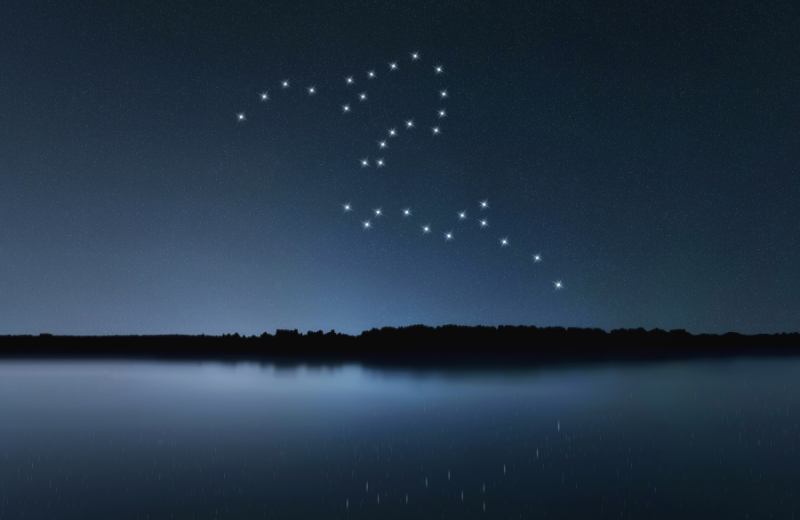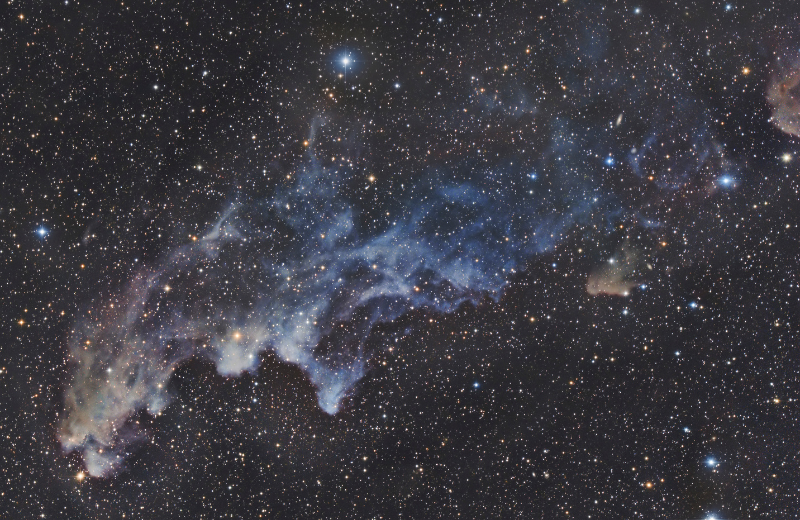The Eridanus constellation, often referred to as "the celestial river," is a captivating feature of the heavens that stretches across the sky like a flowing stream. If you’re curious about its origins, stars, and the best ways to see it, this guide is here to help.
Jump to:
Recommended for you!
Best SellersWhat is the Eridanus Constellation?
Eridanus is one of the largest constellations in the night sky, representing a winding river. Its name derives from Greek mythology, where it is associated with the mythical river Eridanus. In astronomy, this constellation is best known for its lengthy and meandering shape, which spans over 1,300 square degrees of the southern sky. It is home to a rich collection of stars, deep-sky objects, and intriguing celestial phenomena.
The constellation is visible in both the northern and southern hemispheres, but it’s primarily seen from southern latitudes. Its distinctive river-like structure gives it a unique identity among the 88 modern constellations.
What Does Eridanus Look Like?

Eridanus resembles a long, flowing river stretching across the night sky. It starts near the bright star Rigel in the constellation Orion and extends southward, winding through a vast area of space. Its stars form a curving line, which makes it relatively easy to identify once you know where to look. The constellation’s brightest star, Achernar, marks its southernmost point, appearing like the endpoint of a river meeting the sea.
How Far is the Eridanus Constellation from Earth?
The stars of Eridanus are at varying distances from Earth, as they are not physically connected but appear grouped from our perspective. Achernar, the brightest star, is located approximately 139 light-years away. Other stars, such as Cursa and Epsilon Eridani, range between 10 and 100 light-years from Earth. Epsilon Eridani is especially notable as one of the closest stars with a known planetary system.
The Eridanus Constellation Myth

In Greek mythology, Eridanus is often linked to the story of Phaethon, the son of the sun god Helios. According to legend, Phaethon attempted to drive his father’s solar chariot but lost control, scorching the Earth and the heavens. To prevent further destruction, Zeus struck him down with a thunderbolt, and Phaethon’s body fell into the river Eridanus. The river was said to flow with tears shed by Phaethon’s mourning sisters, who were transformed into poplar trees.
The constellation embodies the celestial version of this mythical river, a poignant reminder of the tale’s themes of ambition and consequence.
Eridanus' Stars
Eridanus is a sprawling constellation that features several notable stars with distinct characteristics:
- Achernar: As the brightest star in Eridanus, Achernar is a dazzling blue giant located at the southernmost point of the constellation. Its name, meaning "the end of the river" in Arabic, reflects its position in this celestial stream. It is one of the fastest-spinning stars known, completing a rotation in just over two days.
- Cursa: Found near Orion’s Rigel, Cursa serves as the starting point of Eridanus. This white star shines brightly and helps guide observers in tracing the constellation’s path across the sky.
- Epsilon Eridani: This relatively close and faint star is of particular interest to astronomers as it hosts an exoplanet. At just over 10 light-years away, it is one of the closest stars to Earth with a planetary system, making it a key target for the search for extraterrestrial life.
- Zaurak and Rana: These stars, both visible to the naked eye, add to the flowing shape of Eridanus. Their subtle brilliance contributes to the constellation’s visual appeal, making them delightful features for stargazers to spot.
Nebulae in the Eridanus Constellation

Eridanus also contains fascinating deep-sky objects. One of the most intriguing features is the Eridanus Void, a vast region of space with remarkably few galaxies. This mysterious area has puzzled astronomers and sparked numerous theories about its origin.
Another notable object is the Witch Head Nebula, a faint reflection nebula located near the border of Eridanus and Orion. It gets its name from its eerie, witch-like shape and is illuminated by the light of Rigel.
Finding Eridanus in the Sky
Eridanus is a prominent constellation visible from both the northern and southern hemispheres, though it is best observed from southern latitudes. Its appearance varies by season, making timing and location key to spotting its flowing, river-like shape.
When to See Eridanus
For observers in the northern hemisphere, Eridanus is most visible during the late autumn and winter months, particularly from November through February. In the southern hemisphere, it can be seen during summer, especially around December, when it reaches its highest point in the night sky.
How to Locate Eridanus
To find Eridanus, start by identifying the bright star Rigel in the neighbouring constellation Orion. Rigel marks the starting point of Eridanus, and from there, the constellation winds southward in a long, meandering path. Achernar, its brightest star, serves as a useful endpoint, although it is only visible from southern latitudes.
Tips for Observing Eridanus
- Equipment: While many of Eridanus’ stars are visible to the naked eye, using binoculars or a telescope can enhance your view of its dimmer stars and deep-sky features.
- Dark Skies: Choose a stargazing spot away from urban light pollution for the clearest view. A clear southern horizon is particularly important for seeing the constellation in its entirety.
- Star Maps and Apps: A detailed star chart or a stargazing app can help you navigate Eridanus’ extensive and curving shape, making it easier to trace the celestial river.
Recommended for you!
Best SellersFun Facts About Eridanus
- The constellation’s name has roots in Greek mythology, but it also appears in other cultures’ star lore, often symbolising a great river or path.
- Epsilon Eridani, one of its stars, was featured in the popular science fiction series Star Trek as the location of the planet Vulcan.
- Eridanus contains Achernar, one of the fastest-spinning stars known, completing a rotation in just over two days.
Study Astronomy for £29
If the Eridanus constellation has sparked your curiosity, why not explore more about the stars and the cosmos with our Astronomy Diploma Course at Centre of Excellence? This course offers a detailed understanding of the universe, from constellations and star types to the fundamentals of space observation. Perfect for all budding astronomers, the course is available for a discounted price of £29.













